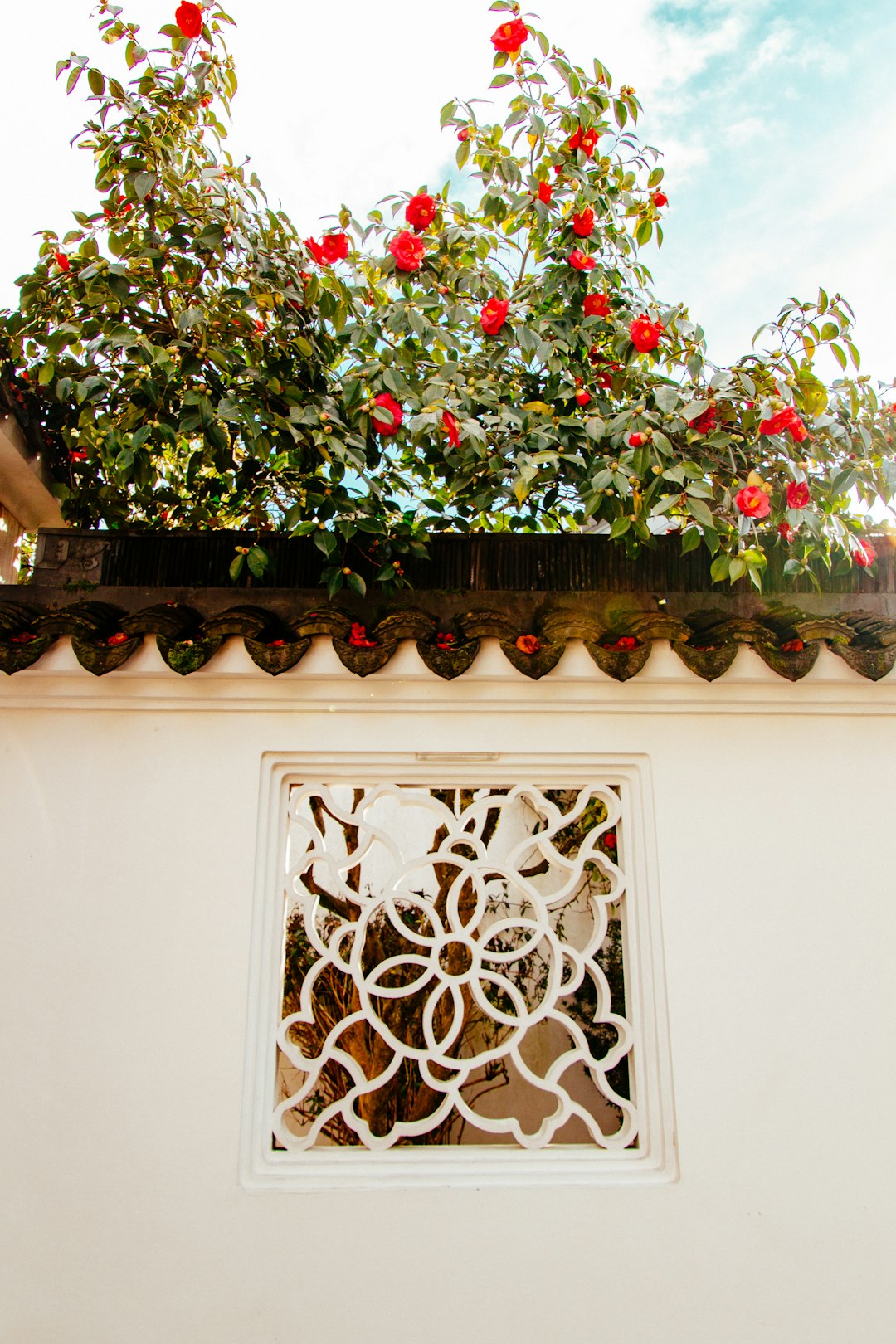Support our educational content for free when you purchase through links on our site. Learn more

Ever found yourself staring at your blank wall, thinking, “This could use some greenery!”? Or perhaps you’ve dreamt of a lush garden but only have a tiny balcony? Welcome to the ultimate showdown: Vertical Gardens vs. Traditional Gardens. Buckle up, because we’re diving deep into the soil (and walls) of these two gardening methods. 🌱
Table of Contents
- Quick Answer
- Quick Tips and Facts
- A Brief History of Vertical and Traditional Gardens
- Space Utilization: Vertical vs. Horizontal
- Accessibility and Convenience
- Air Quality and Environmental Impact
- Cost and Maintenance
- Plant Health and Growth
- Aesthetic Appeal
- Community and Social Benefits
- Future Trends in Gardening
- FAQ
- Conclusion
- Recommended Links
- Reference Links
Quick Answer
Vertical gardens are perfect for urban spaces with limited horizontal room, offering benefits like improved air quality and easy access to fresh produce. Traditional gardens, on the other hand, provide a more natural growth environment, better soil quality, and a fulfilling hands-on experience. Both have their unique advantages and challenges, making the choice dependent on your specific needs and circumstances.
👉 CHECK PRICE on:
Amazon | Walmart | Etsy
Quick Tips and Facts
-
Vertical Gardens:
- ✅ Great for small spaces
- ✅ Improves air quality
- ❌ Higher initial costs
- ❌ Requires more maintenance
-
Traditional Gardens:
- ✅ Better soil quality
- ✅ Lower maintenance costs
- ❌ Requires more space
- ❌ Limited to ground-level sunlight
A Brief History of Vertical and Traditional Gardens

The Roots of Traditional Gardening 🌳
Traditional gardening has been around since humans first started farming. From the lush Hanging Gardens of Babylon to the quaint English cottage gardens, traditional gardening is steeped in history and culture. It involves cultivating plants directly in the ground, allowing them to grow naturally with access to a variety of nutrients.
The Rise of Vertical Gardens 🌿
Vertical gardening is a relatively modern concept, gaining popularity in urban areas where space is a premium. The concept can be traced back to ancient civilizations like the Babylonians, but it has evolved significantly with advancements in technology. Modern vertical gardens, or living walls, were popularized by botanist Patrick Blanc in the late 20th century. These gardens utilize vertical surfaces to grow plants, making them ideal for urban environments.
Space Utilization: Vertical vs. Horizontal
Vertical Gardens: Maximizing Space 🌆
Vertical gardens are the superheroes of space utilization. They allow you to grow plants on walls, fences, or even indoors, making them perfect for urban dwellers with limited horizontal space. Imagine transforming your dull apartment wall into a lush green oasis!
Traditional Gardens: Sprawling Beauty 🌿
Traditional gardens require more horizontal space, making them ideal for suburban or rural areas. They offer the luxury of sprawling landscapes, where plants can grow naturally without the constraints of vertical structures.
| Feature | Vertical Gardens | Traditional Gardens |
|---|---|---|
| Space Utilization | ✅ Excellent | ❌ Requires more space |
| Flexibility | ✅ High | ❌ Limited |
| Urban Suitability | ✅ Perfect | ❌ Challenging |
Accessibility and Convenience
Vertical Gardens: Easy Access 🌿
Vertical gardens bring your plants to eye level, making them easier to tend to. No more bending over or kneeling down! This is especially beneficial for elderly gardeners or those with mobility issues.
Traditional Gardens: Hands-On Experience 🌱
Traditional gardens offer a more immersive gardening experience. There’s something incredibly satisfying about getting your hands dirty and feeling the soil between your fingers. However, this can be physically demanding and less convenient for some.
Air Quality and Environmental Impact
Vertical Gardens: Natural Air Filters 🌬️
Vertical gardens act as natural air filters, absorbing pollutants and releasing oxygen. They can significantly improve air quality, especially in urban areas. Plus, they help reduce noise pollution, creating a more tranquil environment.
Traditional Gardens: Biodiversity Boosters 🌼
Traditional gardens support a wide range of plant and animal life, promoting biodiversity. They provide habitats for pollinators like bees and butterflies, contributing to a healthier ecosystem.
| Feature | Vertical Gardens | Traditional Gardens |
|---|---|---|
| Air Quality | ✅ Excellent | ✅ Good |
| Noise Reduction | ✅ Yes | ❌ No |
| Biodiversity | ❌ Limited | ✅ High |
Cost and Maintenance
Vertical Gardens: Investment Required 💸
Vertical gardens often come with higher initial costs due to the need for structures and irrigation systems. They also require regular maintenance to ensure plants receive adequate water and nutrients.
Traditional Gardens: Budget-Friendly 🌿
Traditional gardens are generally more cost-effective, with lower initial setup costs. They require less maintenance, as plants can naturally access water and nutrients from the soil.
Plant Health and Growth
Vertical Gardens: Controlled Environment 🌱
Vertical gardens allow for a controlled growing environment, which can be beneficial for certain plants. However, they may not provide the same level of nutrient diversity as traditional gardens.
Traditional Gardens: Natural Growth 🌿
Plants in traditional gardens benefit from natural soil ecosystems, which can lead to healthier and more robust growth. They have access to a wider range of nutrients and microorganisms.
Aesthetic Appeal
Vertical Gardens: Modern and Stylish 🌿
Vertical gardens can transform any space into a green masterpiece. They offer a modern and stylish aesthetic, perfect for urban environments. Imagine a living wall in your living room or a green fence in your backyard!
Traditional Gardens: Classic Beauty 🌸
Traditional gardens offer timeless beauty with their sprawling landscapes and diverse plant life. They provide a serene and natural environment, perfect for relaxation and recreation.
Community and Social Benefits
Vertical Gardens: Urban Community Boosters 🌆
Vertical gardens can bring communities together in urban areas. They offer a shared space for residents to grow plants and enjoy greenery, fostering a sense of community and collaboration.
Traditional Gardens: Social Hubs 🌿
Traditional gardens have long been social hubs, where neighbors come together to plant, harvest, and enjoy the fruits of their labor. They offer a space for social interaction and community building.
Future Trends in Gardening
Vertical Gardens: The Future of Urban Greenery 🌿
With urbanization on the rise, vertical gardens are becoming increasingly popular. They offer a sustainable solution to space constraints and environmental challenges in cities. Innovations in vertical gardening technology are making it easier than ever to create and maintain these green spaces.
Traditional Gardens: Embracing Sustainability 🌱
Traditional gardens are also evolving, with a growing focus on sustainability. Techniques like permaculture and organic gardening are gaining popularity, promoting healthier and more sustainable gardening practices.
FAQ

What is a disadvantage of a vertical garden?
Vertical gardens can be more expensive to set up and maintain due to the need for structures and irrigation systems. They also require regular monitoring to ensure plants receive adequate water and nutrients.
Read more about “Vertical Gardening Designs: Grow Up, Not Out! … 🌱”
How do vertical gardens differ from regular gardens?
Vertical gardens utilize vertical surfaces to grow plants, making them ideal for small spaces. Traditional gardens involve planting directly in the ground, offering a more natural growth environment.
Read more about “7 Vertical Gardening Designs … 🌿”
Why are vertical gardens better?
Vertical gardens are better for urban environments with limited space. They improve air quality, reduce noise pollution, and offer easy access to fresh produce.
Why would someone use a vertical garden?
Someone might use a vertical garden to maximize space, improve air quality, and create a stylish green space in an urban environment.
Read more about “12 Advantages of Vertical Gardening in 2024 🌱”
Conclusion

In the battle of Vertical Gardens vs. Traditional Gardens, there’s no clear winner. It all depends on your specific needs and circumstances. If you’re an urban dweller with limited space, a vertical garden might be your best bet. If you have the luxury of space and enjoy the hands-on experience of gardening, a traditional garden could be perfect for you. Either way, both gardening methods offer unique benefits and challenges, making them valuable additions to any green space.
Recommended Links
👉 Shop Vertical Gardening Products on:
Amazon | Walmart | Etsy
👉 Shop Traditional Gardening Products on:
Amazon | Walmart | Etsy
Reference Links
- Benefits of Community Gardens
- Community Garden Events
- Community Garden Policies
- Gardening for Beginners
- Garden Design Ideas
- 7 Vertical Gardening Designs 2024 🌿
- Vertical Gardens vs. Traditional Gardens: Pros and Cons
So, what are you waiting for? Get your hands dirty and start your gardening journey today! 🌱

